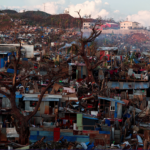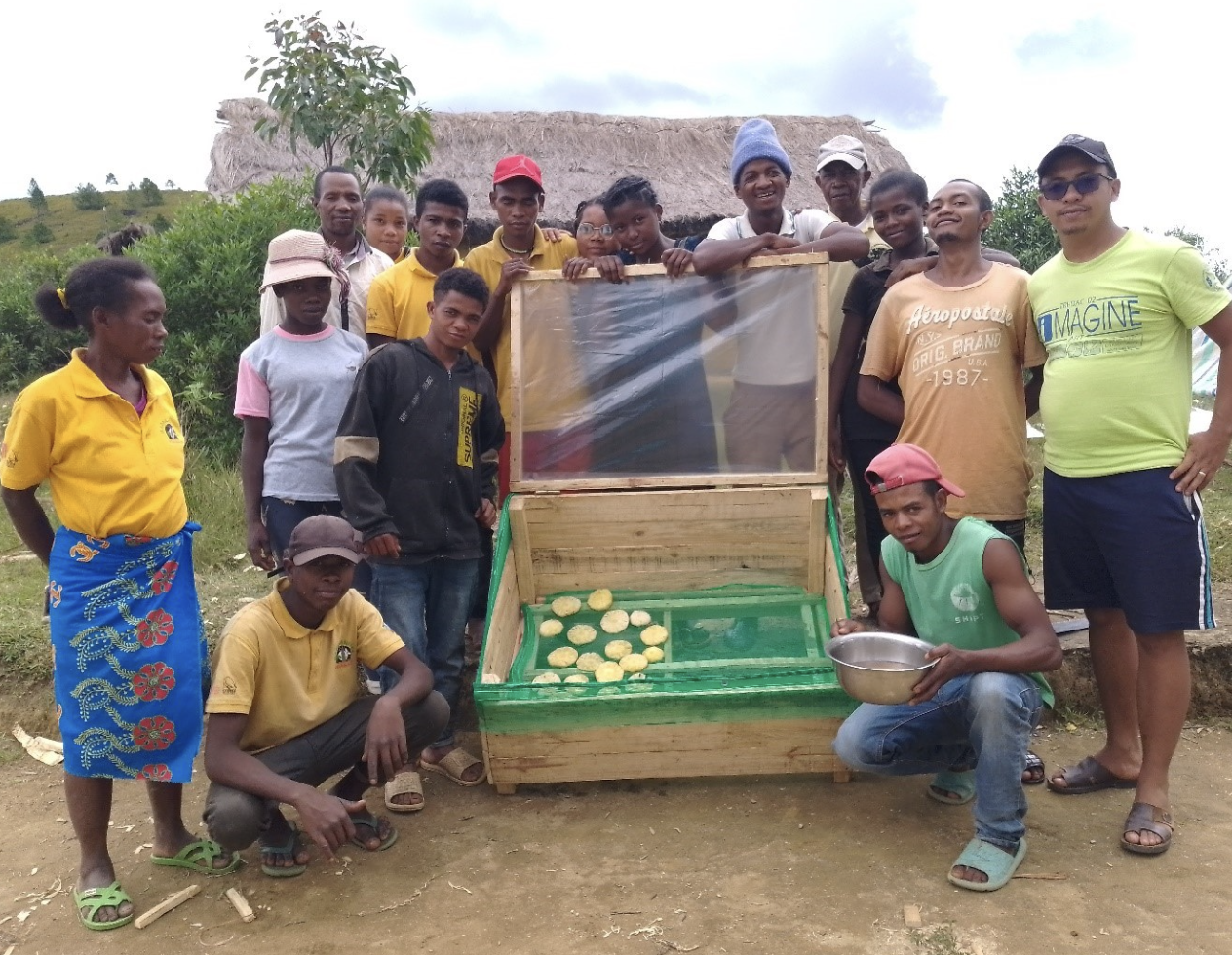
Money for Madagascar is bridging the gap between human needs and biodiversity conservation, empowering Madagascar’s youth to champion sustainable development and environmental stewardship.
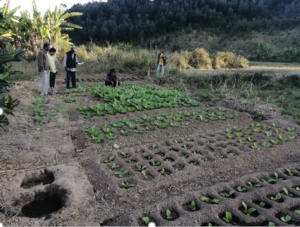
Adoption of sustainable farming techniques by a local community in Ampahitra thanks to the youth
Thanks to funding from the Darwin Initiative, MfM has been working in partnership with Madagasikara Voakajy to address Madagascar’s biodiversity crisis. The ‘Youths for Lemurs’ conservation and livelihoods project was launched in July 2021 and focuses on reducing the need for forest clearance for agriculture, a significant threat to lemurs. One of the major issues affecting lemur habitats is the use of slash-and-burn forestry techniques, which involve burning down the forest to create space for rice cultivation, resulting in significant harm to lemur habitats.
According to Endangered Species International, the “population of the lemur has fallen to between 2,000 and 2,500 animals in the wild, a highly disturbing 95% decrease in the last 17 years.“ For example, there are now fewer ring-tailed lemurs living in the wild than in zoos around the world. Therefore, creating habitats which help the lemur population survive is incredibly important.
Our efforts have not only been focused on lemur conservation but also on empowering the local community. We have successfully educated 239 young people in Eastern Madagascar on sustainable farming practices. By enhancing agricultural yields, introducing aromatic and medicinal plants, and promoting ethical marketing, these youths have become the driving force behind our conservation efforts. They are now equipped to share their knowledge with their communities, fostering a culture of sustainable farming and critical lemur conservation. The threats of slash-and-burn agriculture, illegal logging, and fires to the lemur population are significant, but our project is making a tangible difference in protecting their habitats and improving the livelihoods of the local community.
We’re proud of projects like this that create a sustainable future where people and lemurs can thrive.
Thanks to our Stakeholders for Supporting us in this Lemur Conservation Project
We’re fortunate to collaborate with a diverse group of partners and stakeholders, each bringing unique expertise and dedication to our shared project.
Madagasikara Voakajy (MV), alongside Association Mitsinjo, Label CBD Consulting (LCBD), Delegation de Jeunesse et Sport Moramanga (DELJS), Circonscription de l’Agriculture et de l’Elevage Moramanga (CIRAE), Circonscription de la Pêche et de l’Economie Bleue (CIRPEB), Money for MAdagascar (MFM)) and Circonscription de l’Environnement et Foret Moramanga (CIREF).
Additionally, we’re honoured to have the Ministry of Industry, Commerce and Consumption (MICC) and the Alaotra-Mangoro Regional Tourism Office (ORTALMA) lending their invaluable support and expertise to our collective endeavour.
Money for Madagascar’s Success Story from our Lemur Conservation Project
How did you become involved in the project?
“Hi, I’m Maxime, a 26-year-old member of the Pronki group in Ampahitra, just 13 kilometers from Moramanga in the Anosibe an’Ala region. I joined the group in 2019 after realising the urgent need to protect our biodiversity and lemurs, thanks to the Madagasikara Voakajy team.”
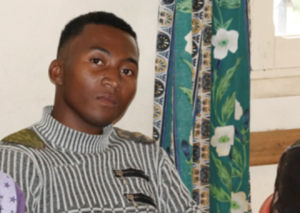
Maxime, 26, is part of an ongoing biodiversity and lemur conservation project.
Maxime’s group is part of our ongoing project. As farmers, they’re learning new techniques and raising awareness about the importance of their environment. A part of this includes conducting regular patrols to report any violations to the authorities.
What differences have been seen thanks to this project?
“As a result of this project, we’ve noticed remarkable changes! For example, we now cultivate the same plot for multiple years and use fewer seeds, reducing seed usage from 65% to 50%.”
Those involved in the programme also switched to transplanting rice in rows instead of direct sowing, which has boosted yields. Plus, they have learned composting techniques for growing beans and managed enough rice that could be stored for future use during adverse weather.
The most significant challenge to the forest is migrants from outside the area, carrying weapons to destroy the forest for rice cultivation using harmful slash-and-burn techniques. Fortunately, as part of this programme, the local youths involved are committed to safeguarding the forests, and there are ongoing plans for restoration efforts.
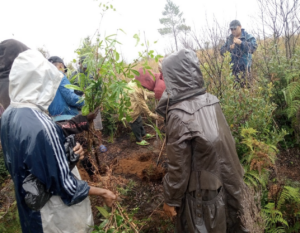
Reforestation by the youth team in Amparalalana.
What does the future hold for this project?
“In the future, our plan is to establish cooperatives, creating opportunities for young people to collaborate, produce goods, and explore distribution channels. These cooperatives will not only provide a platform for youth engagement but also contribute to the sustainable development of the region.”
Five youth groups in the region are forming a cooperative with about 50 members. They recently elected officers, and Maxime (pictured above) has been chosen as the treasurer! The overall goal of this group is to use their new expertise to cultivate and distribute products like rice, ginger, and beans. By practising mindful farming and balancing human consumption with sustainable farming practices, the team can set a positive example for lemur and human coexistence, replacing traditional slash-and-burn methods with more sustainable processes.
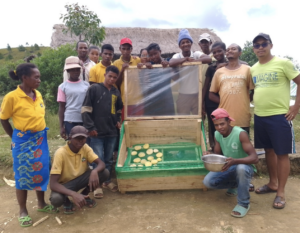
Training for dried fruit manufacturing and processing of agricultural products.
Key Successes of this Project’s Sustainable Farming Method
- 239 young people are involved in sustainable farming methods, including composting, agroforestry, and crop diversification on demonstration plots.
- The youths, with their innovative spirit, have started to incorporate aromatic and medicinal plants into their farming systems, opening new possibilities and avenues for sustainable agriculture.
- Five youth-led cooperatives have developed business plans and participated in regional fairs, generating income and promoting conservation.
- The youth cooperatives have engaged with private enterprises, promising a sustainable income source for the youth.
- Local communities learning the benefits of sustainable farming:
- The youths have conducted 356 awareness sessions and 19 reforestation activities, reaching 4,711 people.
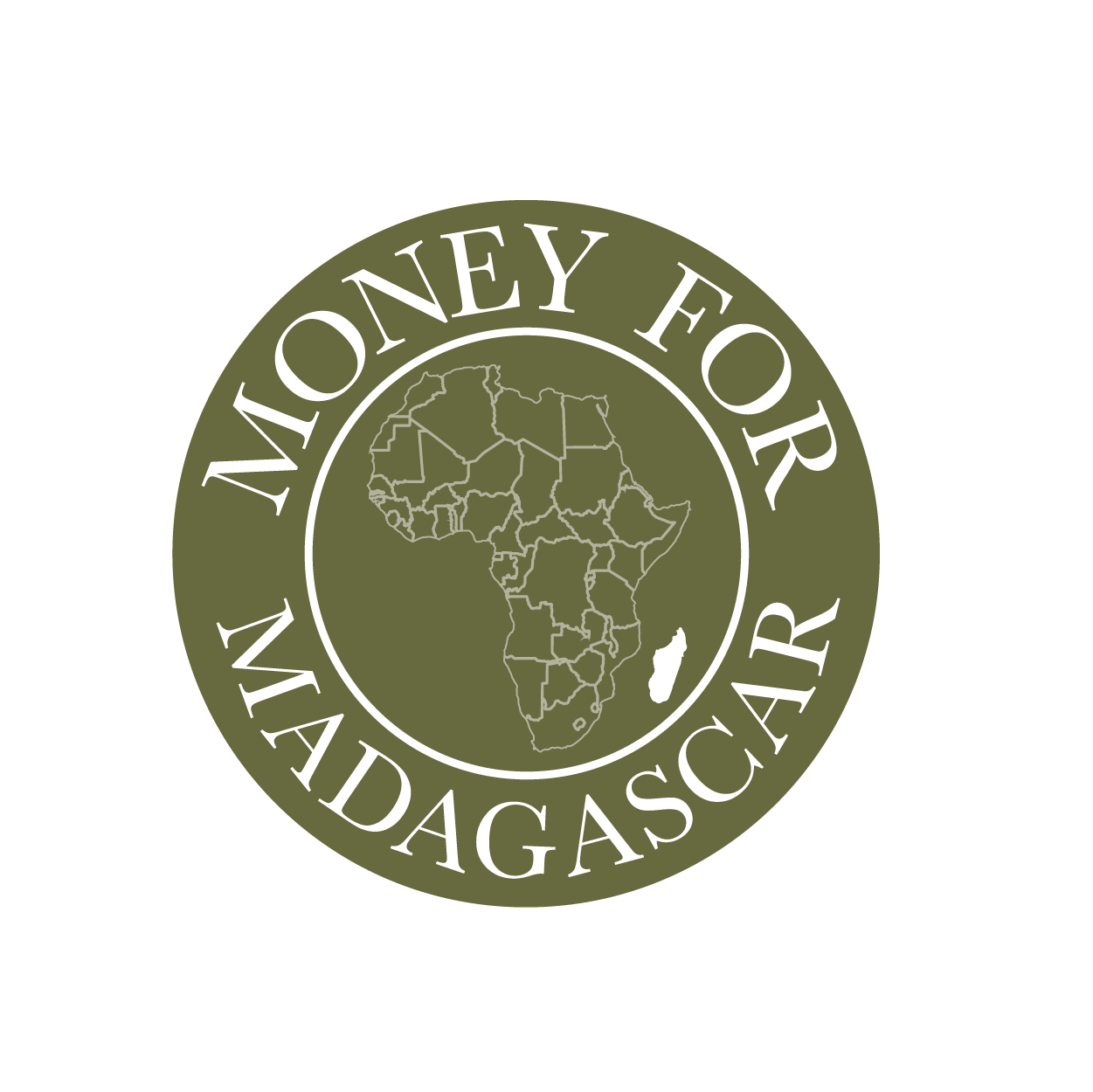

 English
English

